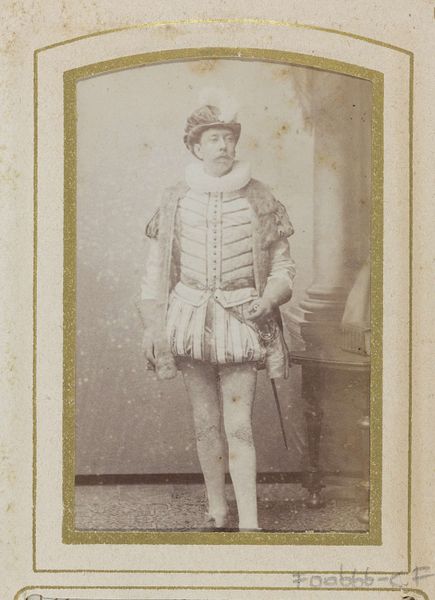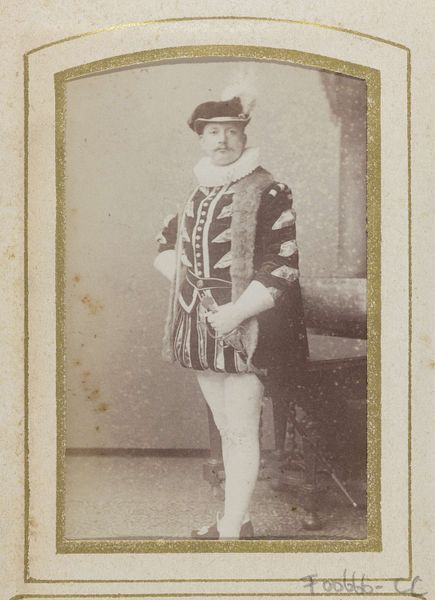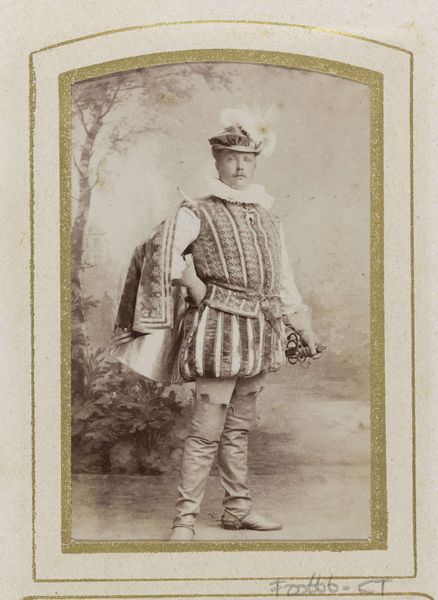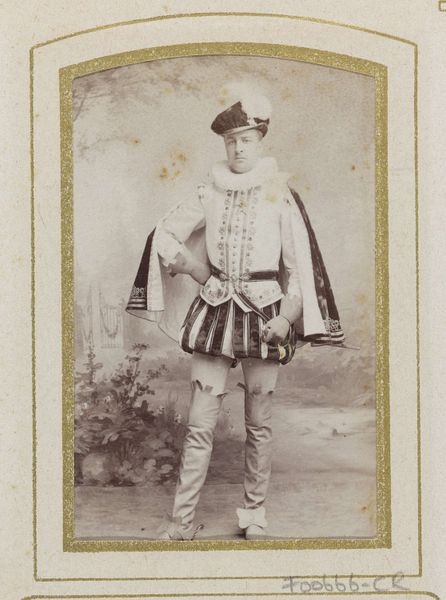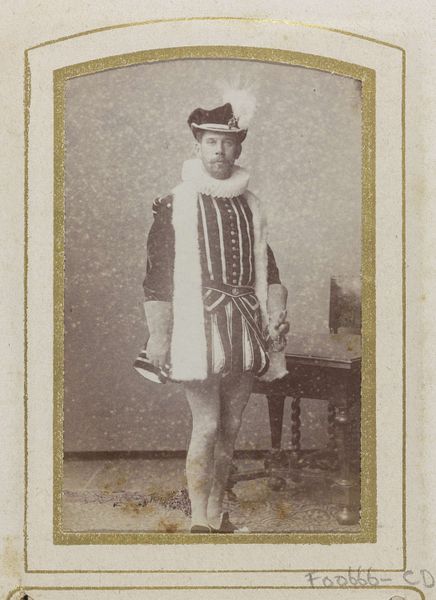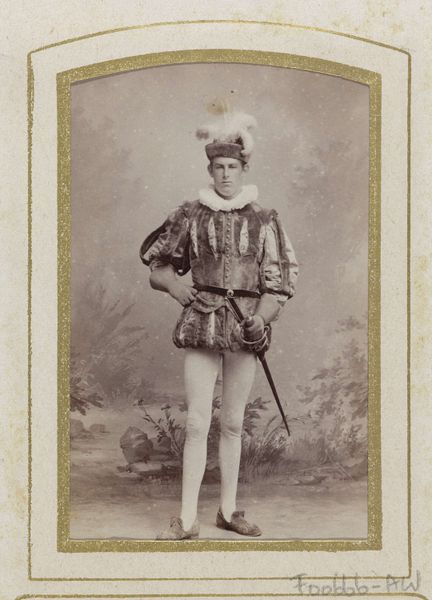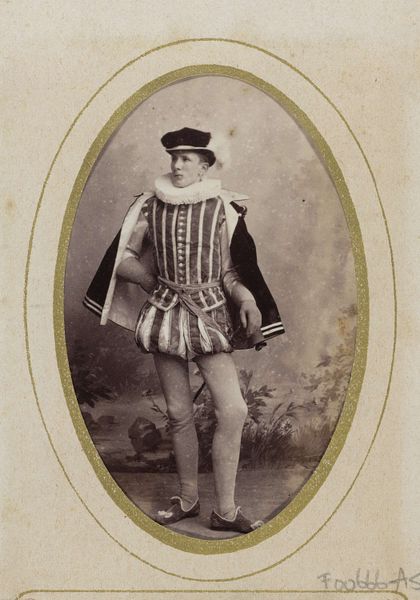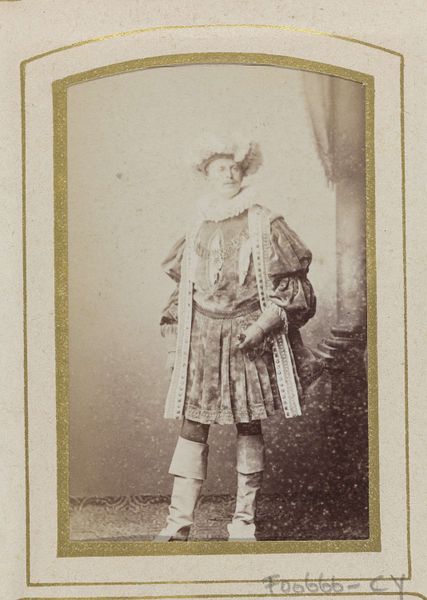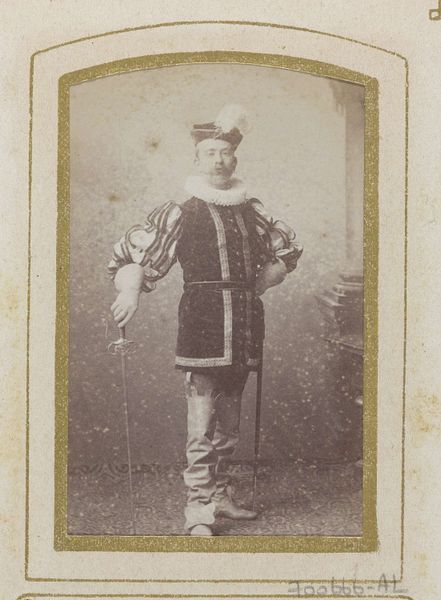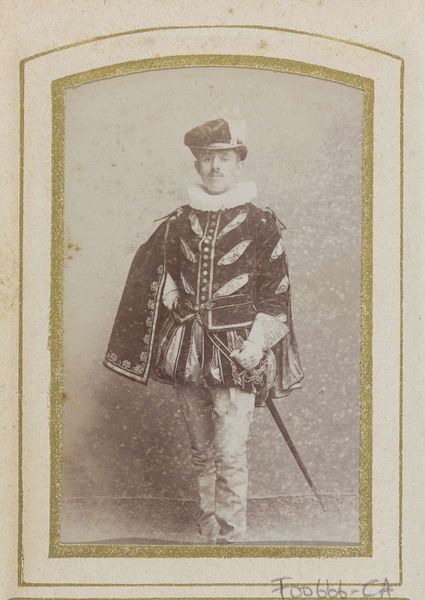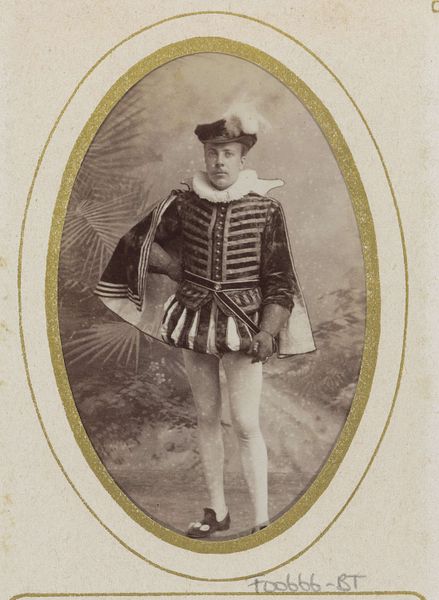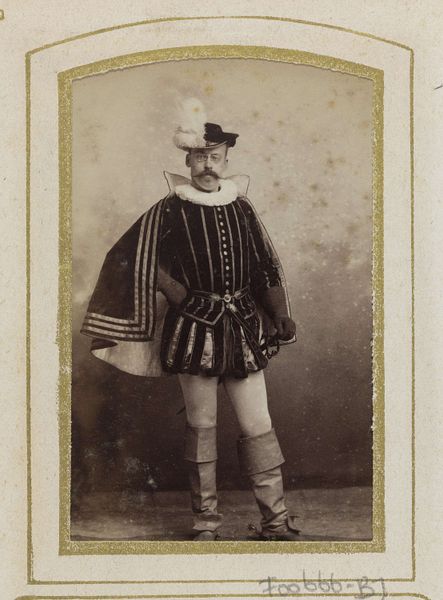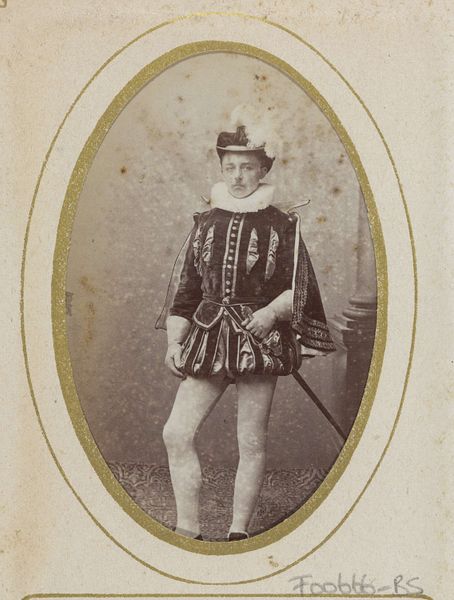
#
yellowing
#
yellowing background
#
photo restoration
#
archive photography
#
film poster
#
historical photography
#
portrait reference
#
old-timey
#
yellow element
#
19th century
Dimensions: height 83 mm, width 52 mm
Copyright: Rijks Museum: Open Domain
Curator: This photographic portrait captures Cornelis Hoogendijk sometime between 1884 and 1894, according to our records. He's in full costume. Editor: What strikes me first is the theatricality—it's a constructed image meant to project a certain idea of... nobility, perhaps? Curator: It certainly draws on historical tropes. You have the ruff collar, the feathered hat, even the pose seems carefully considered for a desired effect. The materiality is also striking: consider the presumably heavy fabrics, the buttons and ornamentation, all signs of expense and craft. Editor: Right, and those materials wouldn't just *exist*. The socio-political context is crucial: this is the late 19th century, a time when burgeoning industrialization allowed for increased production of textiles and accessories—though, of course, accessing such finery was still heavily determined by class and status. Was this costume made specifically for the portrait, or for an actual theatrical performance? Curator: Good question! The purpose likely dictated the construction. A theatrical costume might prioritize visual impact from a distance, using less durable or less costly materials, while a portrait costume could feature finer details meant to be seen up close. The presence of a theatrical backdrop may suggest its making or inspiration within such performative activity. Editor: So, this image becomes a document not only of a man but also of an era obsessed with both performance and documenting itself. And consider the social implications of this act. A portrait was, at that time, a symbol of importance, prestige...power. This piece allows us a glance into the performance of identity and the means required to sustain the power of such constructs. Curator: Exactly. Thinking about production—the photographic process itself, the textiles, and labor that goes into it all—it layers meanings upon this one image. It certainly does offer a view on identity, performance and, maybe, the weight of social structures at the time. Editor: Yes. This discussion helps see the work is a product and marker of cultural identity and the forces shaping society’s perception and use of visual symbolism.
Comments
No comments
Be the first to comment and join the conversation on the ultimate creative platform.
